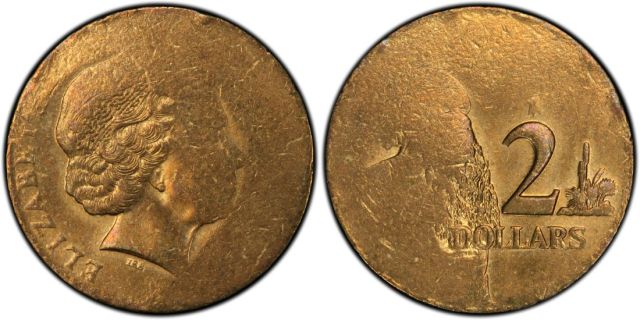January 2013 Archives
Last week, Florida hosted the annual Florida United Numismatics (FUN) coin show, and Sydney coin dealer Eric Eigner from Drake Sterling Numismatics was fortunate enough to attend. He emailed us his show report from the States yesterday, and we've reproduced it below.
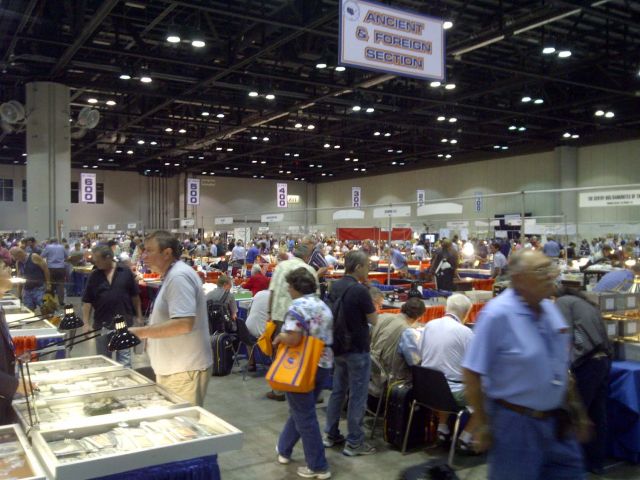
Florida United Numismatics FUN Show
It's my second FUN Show in as many years. I attended the last show with Chris Buesnell last year, and as I was in the neighbourhood last month, I thought I'd swing by Orlando, Florida to attend once again.
Like last year, the show was held in the second week of the New Year (10th Jan - 13th Jan), at the Orange County Convention Centre, just down the road from Universal Studios and Disney World. As one of the biggest coin shows in the numismatic calendar, the show attracted some of the United States' and the world's largest coin and banknote dealers. Despite the difficulty in organising and running a show of this scale, there was no charge for entry, and after receiving a silver medallion commemorating the 100th anniversary of the Buffalo nickel, I found myself on the main trading floor.
Americans are known for doing things on a large scale, and the FUN show did not disappoint. The hall was divided up into ten aisles, each aisle containing more than thirty dealers. US coin and banknote dealers were up the front, while world coin dealers and the "budget" sections were at the back. PCGS and NGC had their own booths (on opposite sides of the hall), while Heritage had an entire block to themselves near the entrance.
There was a section for kids, as well, with a gold panning exhibit (where kids could pan for real gold dust) and a President Lincoln exhibit (with a visit from the president himself, mole and all). Coin and banknote clubs had set up their displays near the back, and there was a wide range of numismatic-related pieces on display, including a few Australian coins and banknotes, shell currency from the Pacific islands, and ancient coins from Greece and Rome.
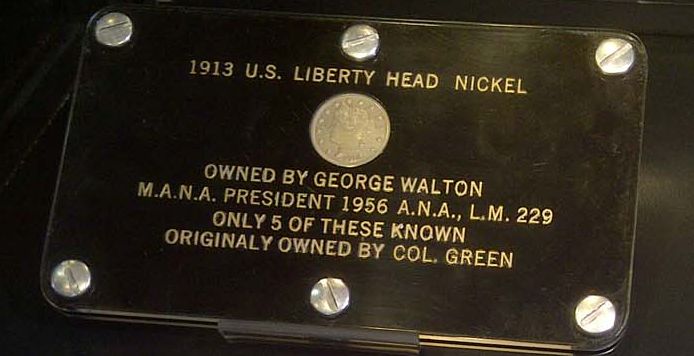
1913 Liberty Nickel
As always, PCGS was present to accept coins for grading. Their table was busy, with long lines of collectors waiting for service. They were also holding a grading competition, which was open to all PCGS Collectors Club members on the floor. The prize for the winner was a $20 St Gaudens Double Eagle graded PCGS MS65, worth around US$2,500.
Meanwhile, NGC had a display of coins from the Arthur L. Gowan and Kamin Collections. Both sets were complete and scored highly in NGC's Set Registry programme. A lot of the coins were the finest-graded.
Of the coin dealers, there were many to go through. I'm glad the show goes over four days, because there really isn't enough time to visit every dealer in one day. I dropped by the tables of a few of the dealers I do regular business with, and their reports were that business was brisk. In fact, I experienced this first-hand, when I was reviewing a group of coins and stepped away from a table to work out the numbers, only to come back ten minutes later to find the coins I had had my eyes on had sold. Silver and gold bullion were also strong, while blocks and sheets of US banknotes sat in displays eagerly looking for new homes. Silver and gold Chinese Pandas and US Eagles were particularly popular, while bullion (and numismatic) sovereigns were thin on the ground.
Nevertheless, I managed to pick up a nice run of PCGS MS64 George V sovereigns from the UK and Australia, as well as the super scarce 1913-C sovereign (mintage only 3,715 pieces) and the 1910-C sovereign , graded PCGS MS63 and PCGS MS62, respectively. Interestingly, business in second-hand timepieces was also strong, with vintage watches being bought right off the wrists of surprised collectors.
On the whole, the FUN show of 2013 appeared to be a success. I can't speak for all the dealers who attended, but of those I asked (mostly world coin dealers), comments were generally positive. I look forward to attending the show in the future.
Eric Eigner
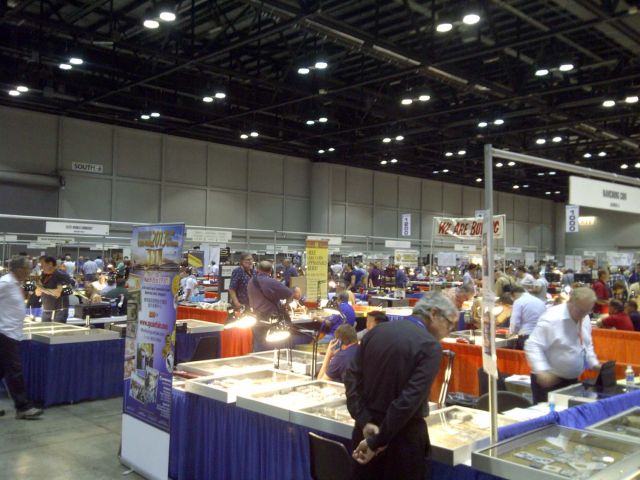
Florida United Numismatics FUN Show
Thanks to Eric from Drake Sterling Numismatics for keeping us up to date with news from afar.
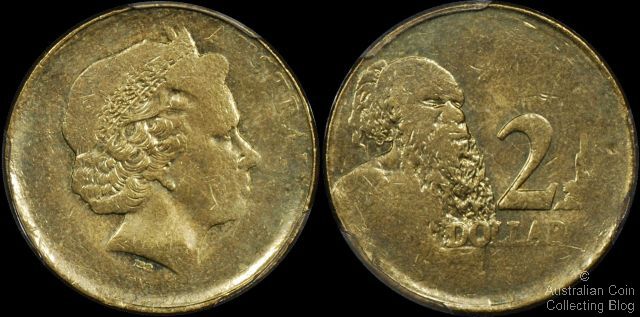
The discovery piece, the first slabbed $2 on Foreign Euro Planchet PCGS MS63
The last Downies Australian Coin Auction 312 saw 3 more Australian $2 error coins struck on foreign Euro 10 cent planchets surface. As published in Australasian Coin and Banknote Magazine in September 2012 when only one was known, the identified population of these wrong planchet errors is now 4.
Auction lot numbers 534, 535 and 536 identified a further 3 raw examples that also appear to have the same specifications. These sold for $525, $650 and $750 plus 19.25% buyers premium.
One of these examples has been graded by PCGS and is for sale on eBay starting at 99c. This newest coin is graded by PCGS as MS61. The Professional Coin Grading Service has somehow come to determine it's date as 2000 although there's no obvious date on the coin.
It will be interesting to watch this eBay auction and see what the final price* is as we were surprised at the prices achieved in the Downies auction. Having these errors identified certainly adds to their value rather than settling for the description of "coin struck on underweight planchet" or "weak strike". Maybe all of us will look closer at coins advertised this way in the future and think outside the square.
*sold on January 27th 2013 for $3050
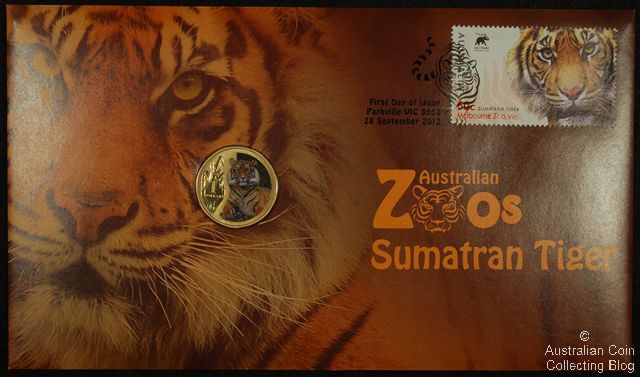
2012 Sumatran Tiger One Dollar PNC
This postal numismatic cover or PNC features one of the Animals of the Zoo series of coloured one dollars by the Royal Australian Mint. It commemorates 150 years of the Melbourne Zoo and depicts the critically endangered Sumatran Tiger. It has a tiger postmark and is cancelled in Parkville, Vic home of the Melbourne Zoo. It has one tiger 60c stamp and is a bold majestic cover. Issued for $15.95 by Australia Post.
For mintage information of this issue please take a look at 2012 1 dollar issues and mintages.
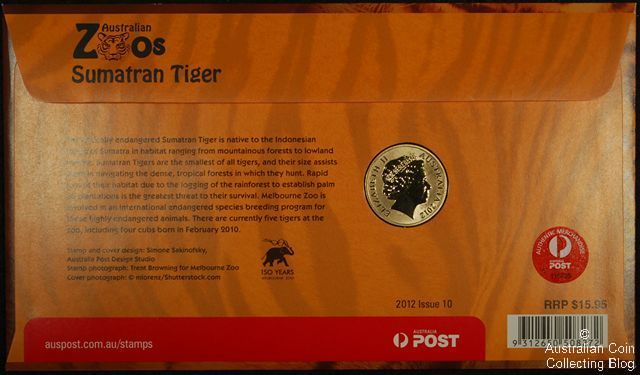
2012 Sumatran Tiger One Dollar PNC
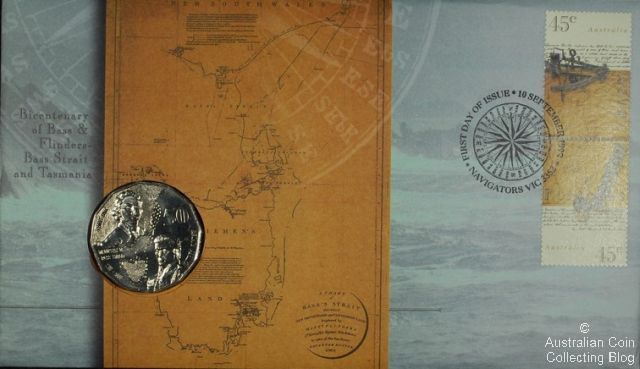
1998 Bass and Flinders PNC
The Bass and Flinders PNC was released with 4 different cancellation stamp/postmarks. 3 of these were with a special ANDA postmark stamped at the Sydney ANDA show Oct 30, 31 and Nov 1 with a quantity of 1,000 each day. The regular PNC with a postmark from Navigators in (Ballarat) Victoria has a mintage of 82,004. The 1998 50 cent Bass and Flinders commemorative coin was struck by the Royal Australian Mint and can be found in circulation. The PNC features the coin and two 45 cent commemorative stamps and was issued for $5.95.
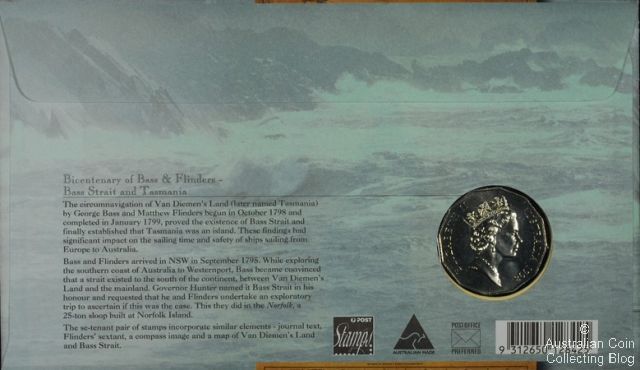
1998 Bass and Flinders PNC
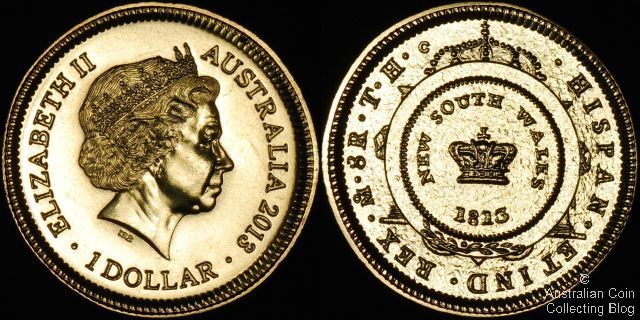
C Mintmark Gallery Press Dollar minted 1/1/13
Australia was in it's infancy as a fledgling penal colony in 1813 when it struck the first truly Australian coins. The holey dollar and dump were made from Spanish silver "pieces of eight". 200 years later we celebrate Australia's first official coins with a 2013 dated mintmark one dollar from the Royal Australian Mint. Each year a design is chosen to bear mintmarks, counterstamps and privymarks released throughout the year and for 2013 it is a stunning design.
The design features denticles on the obverse which adds much character to the dollar coin as we're used to seeing it. It also sees the words "1 DOLLAR" appear on the obverse or Queen's head side which is not common on the one dollar. Having these features does make it seem much more like a NCLT (non-circulating legal tender) coin than a circulation dollar. We last saw a circulation dollar that was also the mintmark coin design in 2002 but it's not likely this coin will be released into circulation.
Back in 1812 London sent Governor Lachlan Macquarie 40,000 (£10,000 worth) Spanish eight reale (dollar) coins to the new colony for use as currency to help stamp out the corrupt rum trade. He enlisted the help of convicted forger William Henshall to cut out the centre dump and over strike the donut shaped holey dollar with Five Shillings 1813 and New South Wales 1813 on the fifteen pence dump. The design on this 2013 dollar replicates those original designs of which examples now fetch upwards of $35,000 for a holey dollar and $5,000 for a dump.
The Holey Dollar and Dump were withdrawn and demonetised in 1829 but stand tall as an important part of Australia's numismatic history.
Specifications
| Mint | Year | Denomination | Metal | Mass | Diameter | Finish |
| Royal Australian Mint | 2013 | $1 | Aluminium Bronze | 9 gram | 25mm | uncirculated |
The Australian 1923 half penny is one of the most commonly forged or counterfeited coin of the pre-decimal series. One method of creating a fake 1923 half penny is using a genuine coin and altering the date to give it the appearance of the rarer year. While it's not actually illegal to own an altered date coin it is an offense to try and pass off the coin as it's rarer year type.
Often a 1933 half penny is date altered to take the form of the 1923, a low mintage year that commands a high premium when sold. A genuine 1923 half penny can bring anywhere from $1,000 to $100,000 depending on the condition.
Recently we became aware of one such altered date 1923 halfpenny graded as NGC XF45BN and appearing in a Heritage coin auction. Thankfully Australian numismatic experts pounced on this coin advising the auction house of the error which we're sure will be passed along to NGC where they'll likely have to pay out on their numismatic grading guarantee. The auction house was quick to do the right thing for potential buyers and remove the item from sale.
It's been common for collectors to be deceived by these coins but not too often do we see one that isn't picked up by the auction house or indeed the third party grading service and listed or authenticated as the genuine coin. No doubt NGC will flag this coin in future for a more rigorous authentification process. How many collectors are holding 1923 half pennies in the belief that they are genuine when they are not?
The NGC graded altered date can be easily picked if you know what to look for. The host coin, a 1933 was probably chosen because the last 3 of the date was likely to be the digit most scrutinized and this isn't the number that needs altering. The 2 (that was once a 3) in the date just doesn't look right but is difficult to tell from the image as you see it in the link. The key to picking this fake is that the die for the host coin, the 1933 is very different to the 1923 genuine coin. The reverse lettering on the genuine 1923 half penny is flat based whereas the lettering on the host 1933 coin has a curved base. This and other differences are clearly outlined in the article on thesandpit website "How To Pick A Fake 1923 Halfpenny". You can clearly see the NGC graded altered date example has this curved base lettering. Compare this lettering to a genuine 1923 half penny.
Andrew Crellin of Sterling and Currency has also written a comprehensive article on the Australian 1923 half penny which is well worth a read.
Unless otherwise stated the copyright for images used on this site is owned by the Australian Coin Collecting Blog. You are not allowed to use or reproduce them in any form for any reason without our permission. We've spent a lot of time and money learning how to take great coin images and you're just not allowed to take credit for our hard work.
That all sounds scary but getting permission to use our images is usually just a matter of emailing us and asking nicely. In the majority of cases we just like to be credited as the source of the image. If you're using an image online then we need to have a link back to this website.
It's as simple as that. Do not use our images without asking first.
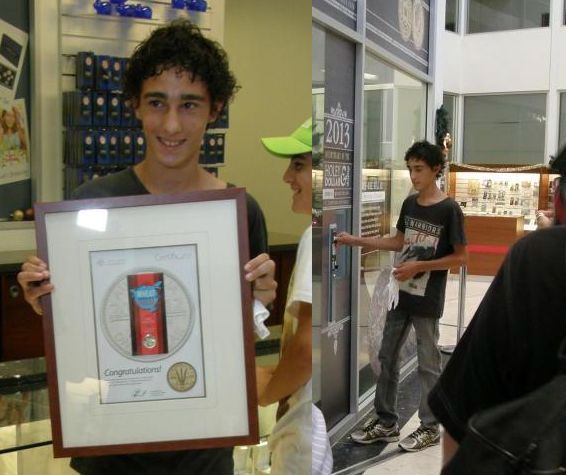
Harley Russo and His Last Coin For 2012 (image courtesy Karl)
If your name is Russo then there's a number one spot for you in the queue at the Royal Australian Mint to strike the first coin each year! Well that's the theme after 13 year old Harley Russo was first to mint the new Bicentenary of the Holey Dollar and Dump C mintmark one dollar at the RAM today.
Last year it was Brisbane man Peter Russo who braved a summers night camping at the front doors at the Mint but this year for Harley it was a multi-day event. Harley camped with his 3 brothers over the weekend and it was a family affair to mint the last coin of 2012 and the first for 2013. Harley's good luck earned him the raffle win of being the last to mint the gallery press dollar for 2012 before RAM techicians worked to change the dies for today's events.

The First 100 Queue 1 January 2013 at the Royal Australian Mint (image courtesy Karl)
The sizzling of bacon and egg breakfast and a local jazz band eased the boredom for those keen earlybirds in the queue and the first lucky 100 went home with a showbag of goodies and a certificate. Harley with certificate number 1 was offered $800 by another collector to sell his number one coin but refused. Go Harley, you now have a unique set of coins to remember New Years events of 2013!
See the RAM facebook page for more images.
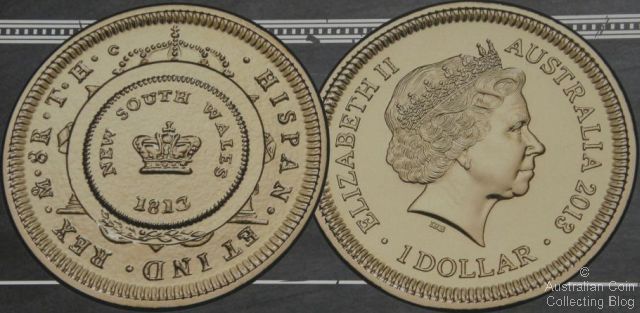
2013 Mintmark Dollar Bicentenary of the Holey Dollar and Dump (image courtesy Karl)

